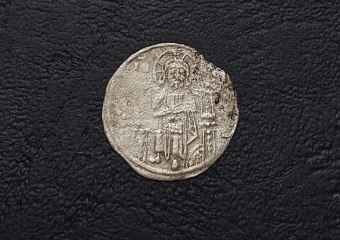An extremely valuable discovery in the castle of the medieval Bulgarian town of Rusokastro
 The latest discovery of the archaeologists exploring the castle of the medieval town of Rusokastro is probably the most important since the beginning of the excavations in 2006. For more than a month, the team from the Regional historical museum of Burgas has been surveying a monumental building built at the highest point of the rocky hill. There, archaeologists discover a huge tower, 15 m long and 12 m wide, which walls are 1.9 m wide. Their faces were made of carefully crafted squares - stones shaped like a cube or parallelepiped, soldered with mortar.
The latest discovery of the archaeologists exploring the castle of the medieval town of Rusokastro is probably the most important since the beginning of the excavations in 2006. For more than a month, the team from the Regional historical museum of Burgas has been surveying a monumental building built at the highest point of the rocky hill. There, archaeologists discover a huge tower, 15 m long and 12 m wide, which walls are 1.9 m wide. Their faces were made of carefully crafted squares - stones shaped like a cube or parallelepiped, soldered with mortar.
According to the plan, the tower is hexagon - hexagonal, and is not connected to the castle walls. Such archeological sites are called "donjons". These are the main towers of the castles, which are often the homes of the ruler of the fortress or his ruler. Sometimes the term "citadel" means the most fortified part of the medieval city. On the Balkan Peninsula, such sites are called piers or self-defense towers.
"In essence, this is the tower of the ruler, here resided the local ruler - mullet or castrophylaxis, appointed by the ruler of the state. The entrances to such towers were at least 3 meters high, and were reached by walking stairs which, in the event of a siege, were defended by the defenders. The towers were three, four, five stories. Their height was 1.5 to 2 times their width. That is, the tower at Rusokastro probably reached, and perhaps exceeded, 20 m. There were weapons depots, food supplies, bedrooms, and a reservoir in them. Thus, in the event of a siege, even if the city and the castle are taken over, the last defenders and the local aristocrat with their family can defend themselves for a long time until outside aid arrives or until supplies are over, ”Dr. Milen explains. Nikolov and Vasil Mutafov.

The chronology of the newly discovered tower in Rusokastro is yet to be specified, but for now it is believed that it should date from the 13th century.
In Bulgaria and the Balkans, such free-standing polygonal or multi-walled towers are very rare. An example of this is the Tsepina Fortress in the Western Rhodopes - the capital of despot Alexius Slav until 1215, but this tower is an octagon, that is, octagonal. So is the tower in Plateemon fortress in northern Greece.
At this stage of the study, the only hexagonal tower that can be given as the closest analogue to the Rusokastrenska is in the Tsarevi kuli Fortress, near the present-day city of Strumica, in the Republic of Northern Macedonia.
Unfortunately, the very nice building material - the squares - have attracted the attention of many locals from hundreds of years ago and have been removed from the site, leaving even a few landfills in place. Part of the inner walls of the ruler's tower have been preserved, but the outer walls have been almost completely destroyed and the material with which they were built - exported.

The exploration of the interior of the tower of kings is forthcoming. It will start in the last week of August.
For a consecutive year, the archaeological excavations of the medieval Bulgarian town of Rusokastro are conducted by the Burgas Museum and funded by the Municipality of Kameno and the Ministry of Culture of the Republic of Bulgaria.


Comments
comments powered by Disqus